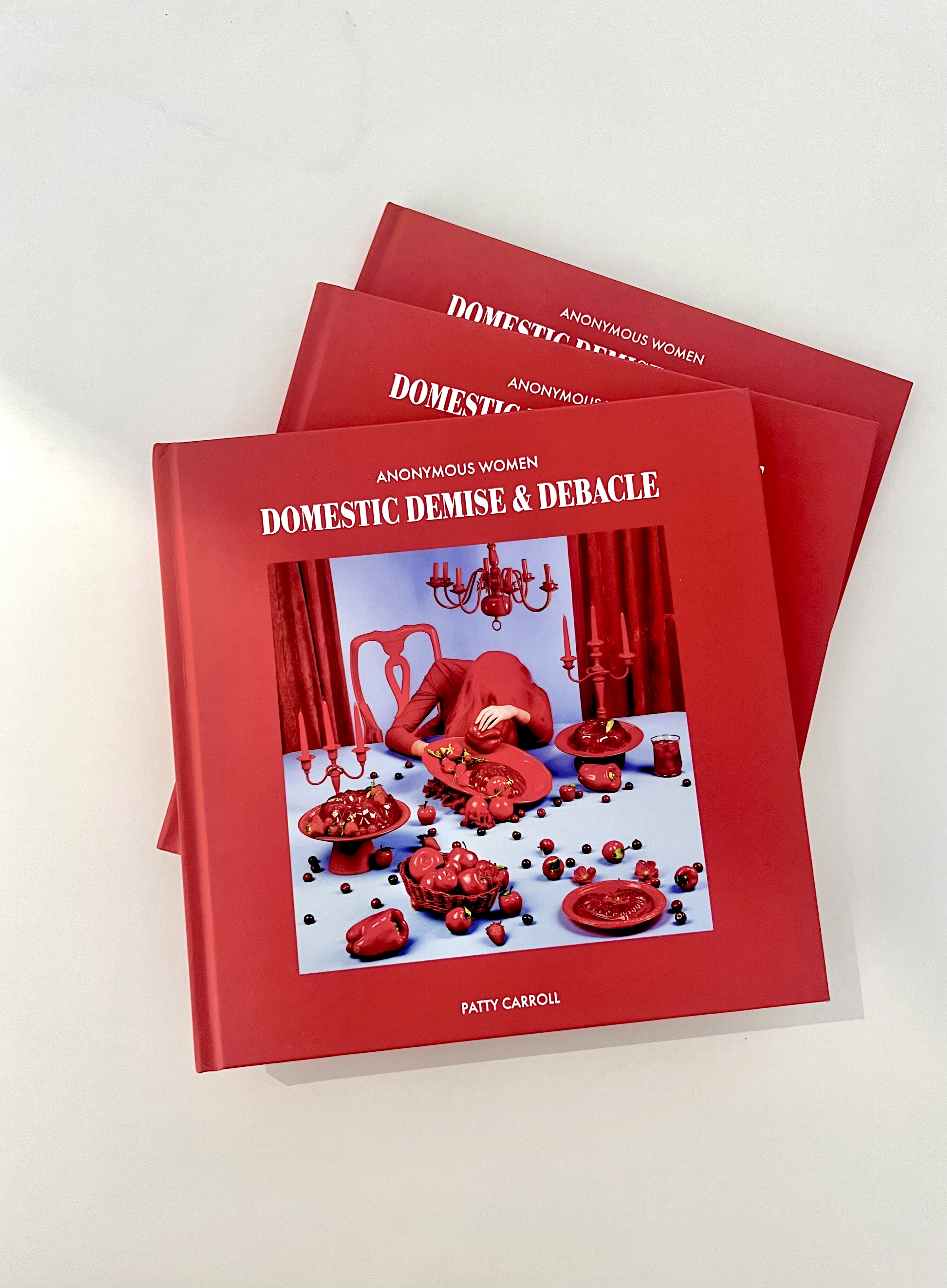
Join us for an exclusive book signing event of acclaimed artist Patty Carroll's newest book, co-published by Catherine Couturier Gallery! Immerse yourself in the anonymous women's dark and humorous worlds as Domestic Demise & Debacle continues Patty's series exploring the interior lives of women and their complicated relationships with domesticity.
Stop by the gallery on Saturday, April 5th from 5 - 7pm for a chance to meet the artist in person at the opening reception of our latest exhibition Demise and Debacle!
Domestic Demise & Debacle
Patty's third book in her series "Anonymous Women," follows Anonymous Women, released in January, 2017 by Daylight Books, and Anonymous Women: Domestic Demise, published in 2020 by Aint-Bad Books. Published by Paper Street Co. and copublished with Catherine Couturier Gallery and Galerie XII, it is Catherine Couturier Gallery's first foreay into book publishing.
The signed book is available for $50. While we are making an exception to our usual policy and offering to ship Domestic Demise & Debacle, due to increased shipping rates, shipping will be $25. Please email gallery@catherinecouturier.com to inquire.